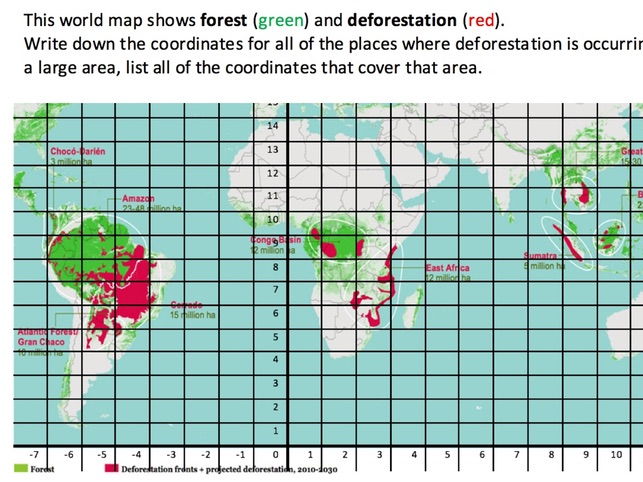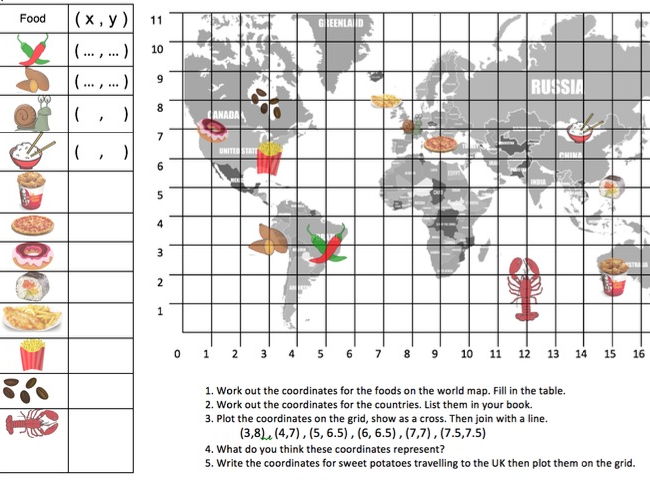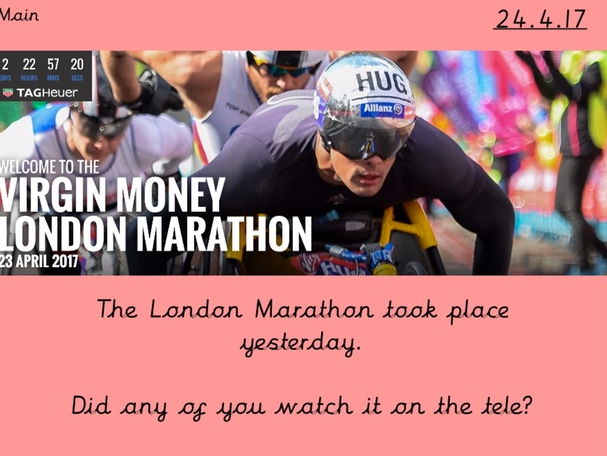
51Uploads
65k+Views
20k+Downloads
Understanding the world

Design Technology 6 week unit on Mechanical Toys, focus on cams
Intended outcome for the 6 week unit of work:
Pupils will design and make a toy using mechanical cams.
They will investigate existing simple automata toys and other mechanical toys. They will evaluate them and look at how they work. Using this knowledge, they will design their own prototype – edit and improve it, then present it to the class. They will consider buyer and use of the product in their design. They will then make their final mechanical product.
6 week plan is included and all of the flipchart slides for the 6 lessons.

Amazon Rainforest themed coordinates activity
Children will investigate, read and plot coordinates on two quadrant grids.
This activity links closely to the cross curricular theme - Amazon Rainforest.

Food from around the world - Coordinates in the first quadrant.
Cross curricular maths lesson with the Creative Curriculum topic - Food From Around The World.
Finding coordinates in the the first quadrant.
Activities include:
1. Work out the coordinates for the foods on the world map. Fill in the table.
2. Work out the coordinates for the countries. List them in your book.
3. Plot the coordinates on the grid, show as a cross. Then join with a line.
(3,8) , (4,7) , (5, 6.5) , (6, 6.5) , (7,7) , (7.5,7.5)
4. What do you think these coordinates represent?
5. Write the coordinates for sweet potatoes travelling to the UK then plot them on the grid.

Science Year 5 - 6 week unit on Life cycles of plants and animals, linked with Amazon Rainforest
6 week unit of work linked to curriculum theme - Amazon Rainforest.
National Curriculum 2014 links
By the end of the unit, pupils should be able to describe the differences in the life cycles of a mammal, an amphibian, an insect and a bird and to describe the life process of reproduction in some plants and animals.
The flipchart includes links to all videos by clicking on the images. The worksheets and activities are stored in the flipchart so clicking on the images will open the files. I have also added them as files in the download.
Learning Intentions:
To know about animal life cycles
To research Amazon wildlife life cycles
To be able to plan a fair germination investigation
To know that flowering plants reproduce
To be able to design a very dangerous plant
To know about naturalists and behaviourists - David Attenborough and Jane Goodall

Guided Reading Making Connections Poster and Prompts
I have created two Making Connections Posters; one with key questions and the other with sentence starters for pupils use for making connections between the text they are reading and themselves, another text and the world.
This activity helps pupils to deeper their understanding of a text through making links for themselves.
Use the think-aloud strategy to model how to make each type of connection, using your list of personal connections to the particular text.
This activity is brilliant when pupils extracting specific information from the text that they then make links to.

London Marathon Maths Lesson
Long multiplication lesson suitable for years 4,5 and 6.
The flipchart slides include a maths starter, teaching slides, main activity, challenge and plenary.
The main activity is to work out the total running time for different running paces between 14 to 3 mins per mile. This includes multiplying decimals by up to two digits.
Challenge: 3km is a good distance to run. This is the same as 1.9 miles. Calculate the total time for each of the paces.






